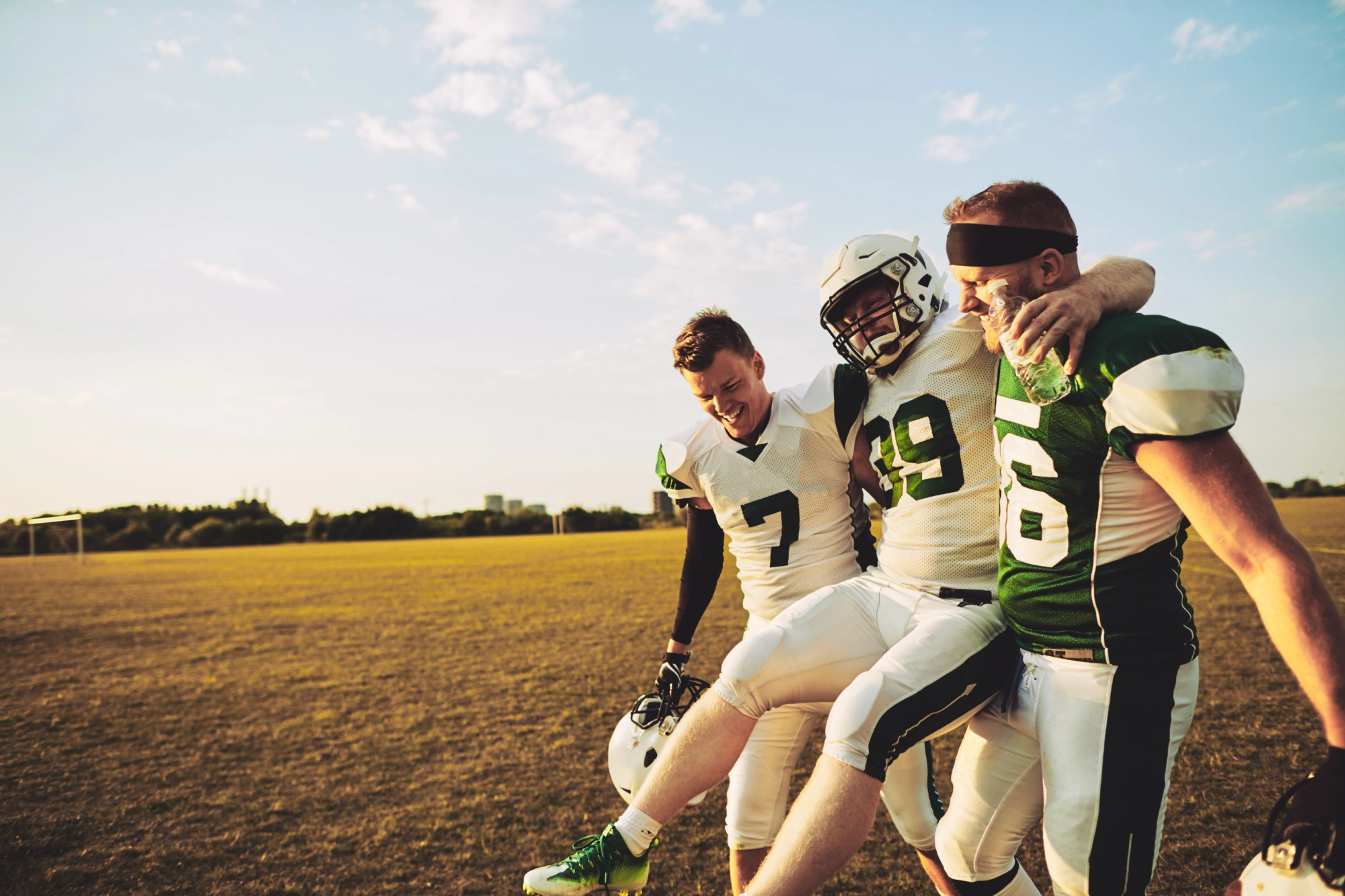How to Prevent Football Injuries
Sports Injuries
•
Nov 30, 2022

How to prevent football injuries is a question on the minds of many parents and young players. Injuries are a part of the game but there are ways to help minimize them, and understanding which parts of the body are most vulnerable can help players, parents, and coaches alike take the necessary steps to reduce the risk of injury.
One way to prevent sports injuries is to make sure players are physically prepared for the game in the form of warm-ups, stretching, and strength training. All of these activities help reduce muscle fatigue and improve flexibility, making athletes less prone to injury.
In this article, we’ll take a look at the most common injuries in football and suggest techniques that players can use to prevent them.
Common football injuries and treatment
The most common injuries in football include everything from ankle sprains, knee ligament tears, and ACL (anterior cruciate ligament) ruptures to hamstring strains, quadriceps strains, shoulder dislocations, and fractures. That’s a long, scary list! However, the most dangerous injuries in football are head injuries, spinal cord injuries, and concussions.
Here is a breakdown of the most common injuries in football by type and the steps you can take to prevent them:
Common football knee injuries
Knee injuries are frequent occurrences in football, particularly in players who participate in contact football. The most common knee injuries include:
- ACL (anterior cruciate ligament) tears
- MCL (medial collateral ligament) sprains
- Patellar tendonitis
- Meniscal tears
- Cartilage injuries
To reduce the risk of a knee injury, players should focus on strengthening the muscles that surround and support the knee joint. Stretching before and after practice is also essential to help reduce the risk of a knee injury.
Back and head injuries
The most common back and head injuries include:
- Concussions
- Spinal cord trauma
- Contusions or bruises
- Whiplash
- Prevention techniques
The best way to reduce the risk of injury in football is to make sure players have proper technique and are wearing the right protective gear. Football helmets and pads should fit snugly and be properly maintained. Players should also wear mouthguards to protect their teeth, jaw, and gums.
Shoulder injuries
Injuries to players’ shoulders are also common in contact football, so coaches should emphasize proper tackling technique. Avoiding dangerous blocks and tackles is essential for minimizing injury risk. Additionally, shoulder strengthening exercises like shoulder presses and lateral raises can help build strength in the muscles that support the shoulder joint.
Common football shoulder injuries include:
- Shoulder dislocations
- Fractured collarbones
- Rotator cuff tears
- Biceps strains
Sprains, strains, tears, and breaks
In a high-impact sport such as football, injury to any of the muscles and bones in the body can occur. Players may suffer from different types of fractures including stable fractures, hairline fractures, and even compound fractures. They may also experience sprains, strains, tears, and breaks that result from contact with an opposing player or a hard surface. Injuries such as these are frequently included when considering the top 10 most common sports injuries.
To prevent any of these types of injury, coaches should teach players proper technique as well as encourage the use of protective gear such as helmets, shoulder pads, and thigh and shin guards. Players can also focus on building strength in the muscles that support the joints as well as increasing flexibility to reduce the risk of injury.
Heat-related injuries
Football players are also at risk of heat-related illnesses such as heat cramps and dehydration. To reduce the risk of these types of injuries, coaches should be aware of the warning signs of heat stroke and take steps to ensure that players have frequent breaks and are properly hydrated. Additionally, coaches should monitor the temperatures on the field and limit or cancel practice when temperatures become too high.
In severe cases of dehydration or heat stroke, players will need to seek immediate medical attention for IV fluids for dehydration. Leaving cases of dehydration untreated can lead to serious medical complications, such as kidney failure.
Continue reading: When should I go to the ER for dehydration?
Overuse injuries
Overuse injuries are also common in football, especially for players who participate in multiple sports. To reduce the risk of overuse injuries, coaches should make sure players get adequate rest between practices and games. Rest days are essential for muscle and bone healing, so players should not be pushed to practice too frequently and be given ample time to recover, especially after an injury or higher output game/practice.
Complete Care is here for any of your game-day injury needs
Knowing how to prevent football injuries is key to helping keep players safe and healthy on the field. Through proper technique, protective gear, getting adequate rest, and taking care of the body (read more about what to eat on game day), athletes can reduce their risk of injury.
Additionally, coaches should focus on teaching players how to recognize and respond to signs of heat-related illness. With these measures in place, players can stay safe while playing the sport they love.
If you’ve been hurt playing football or are facing any other sports injury, please don’t hesitate to contact Complete Care for immediate care. We are a freestanding, walk-in 24/7 emergency room with ER locations throughout Texas and Colorado Springs. No matter which location you visit, our team of experts is here to help you get back in the game safely and quickly.
More Helpful Articles by Complete Care:
